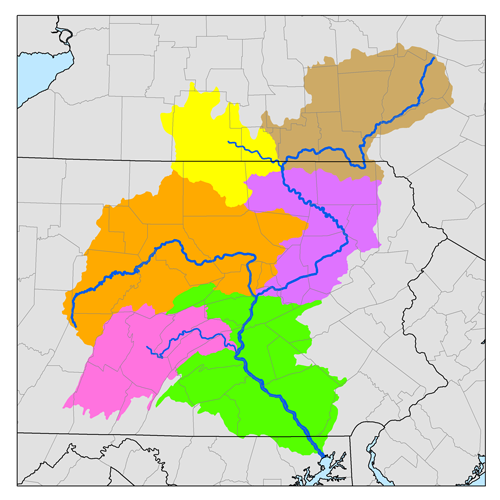digital line graph on:
[Wikipedia]
[Google]
[Amazon]
 A Digital Line Graph (DLG) is a cartographic map feature represented in digital
A Digital Line Graph (DLG) is a cartographic map feature represented in digital
 DLGs are normally derived from USGS maps or USGS map-related sources. DLGs are distributed at three different scales: large-scale, which normally correspond to the USGS 7.5- by 7.5-minute, 1:24,000 and 1:25,000-scale topographic quadrangle map series, 1:63,360-scale for
DLGs are normally derived from USGS maps or USGS map-related sources. DLGs are distributed at three different scales: large-scale, which normally correspond to the USGS 7.5- by 7.5-minute, 1:24,000 and 1:25,000-scale topographic quadrangle map series, 1:63,360-scale for
USGS Fact Sheet, Digital Line Graphs
/ref>
USGS Digital Line GraphsUSGS Product GuidesNational Atlas home page''The National Map''
Cartography United States Geological Survey GIS vector file formats
 A Digital Line Graph (DLG) is a cartographic map feature represented in digital
A Digital Line Graph (DLG) is a cartographic map feature represented in digital vector
Vector most often refers to:
*Euclidean vector, a quantity with a magnitude and a direction
*Vector (epidemiology), an agent that carries and transmits an infectious pathogen into another living organism
Vector may also refer to:
Mathematic ...
form that is distributed by the U.S. Geological Survey (USGS). DLGs are collected from USGS maps and are distributed in large, intermediate and small scale with up to nine different categories of features, depending on the scale. They come in optional and Spatial Data Transfer Standard (SDTS) format and are topologically structured for use in mapping and geographic information system
A geographic information system (GIS) is a type of database containing geographic data (that is, descriptions of phenomena for which location is relevant), combined with software tools for managing, analyzing, and visualizing those data. In a ...
(GIS) applications.
Description
 DLGs are normally derived from USGS maps or USGS map-related sources. DLGs are distributed at three different scales: large-scale, which normally correspond to the USGS 7.5- by 7.5-minute, 1:24,000 and 1:25,000-scale topographic quadrangle map series, 1:63,360-scale for
DLGs are normally derived from USGS maps or USGS map-related sources. DLGs are distributed at three different scales: large-scale, which normally correspond to the USGS 7.5- by 7.5-minute, 1:24,000 and 1:25,000-scale topographic quadrangle map series, 1:63,360-scale for Alaska
Alaska ( ; russian: Аляска, Alyaska; ale, Alax̂sxax̂; ; ems, Alas'kaaq; Yup'ik: ''Alaskaq''; tli, Anáaski) is a state located in the Western United States on the northwest extremity of North America. A semi-exclave of the U ...
and 1:30,000-scale for Puerto Rico
Puerto Rico (; abbreviated PR; tnq, Boriken, ''Borinquen''), officially the Commonwealth of Puerto Rico ( es, link=yes, Estado Libre Asociado de Puerto Rico, lit=Free Associated State of Puerto Rico), is a Caribbean island and unincorporated ...
; intermediate scale, which are derived from the USGS 30- by 60-minute, 1:100,000-scale map series; and small-scale, which are derived from the USGS 1:2,000,000-scale sectional maps of the National Atlas of the United States. Large-scale DLGs are usually cast on the Universal Transverse Mercator coordinate system (UTM), but are sometimes cast on the State Plane rectangular coordinate system. Intermediate-scale DLGs are sold in 30- by 30-minute sections that correspond to the east or west half of the 100K quadrangle map, and each of the 30-minute sections is distributed in four 15- by 15-minute cells and is cast on the UTM coordinate system. Small-scale DLGs are sold in state units and are cast on either the Albers equal-area conic projection system or the geographic coordinate system
The geographic coordinate system (GCS) is a spherical or ellipsoidal coordinate system for measuring and communicating positions directly on the Earth as latitude and longitude. It is the simplest, oldest and most widely used of the various ...
of latitude and longitude, depending on the distribution format. All DLGs are referenced to the North American Datum
The North American Datum (NAD) is the horizontal datum now used to define the geodetic network in North America. A datum is a formal description of the shape of the Earth along with an "anchor" point for the coordinate system. In surveying, ...
of 1927 (NAD27) or the North American Datum of 1983 (NAD83). USGS DLGs are topologically structured for use in mapping and geographic information system
A geographic information system (GIS) is a type of database containing geographic data (that is, descriptions of phenomena for which location is relevant), combined with software tools for managing, analyzing, and visualizing those data. In a ...
(GIS) applications.
Data categories
Nine different categories of features, or layers, are available in DLGs: Public Land Survey System (PLSS),Boundaries
Boundary or Boundaries may refer to:
* Border, in political geography
Entertainment
* ''Boundaries'' (2016 film), a 2016 Canadian film
* ''Boundaries'' (2018 film), a 2018 American-Canadian road trip film
*Boundary (cricket), the edge of the pla ...
(BD), Transportation (TR), Hydrography
Hydrography is the branch of applied sciences which deals with the measurement and description of the physical features of oceans, seas, coastal areas, lakes and rivers, as well as with the prediction of their change over time, for the prima ...
(HY), Hypsography
Hypsometry () is the measurement of the elevation and depth of features of the Earth's surface relative to mean sea level.
On Earth, the elevations can take on either positive or negative (below sea level) values. The distribution is theorised ...
(HP), Non-vegetative features (NV), Survey control and markers (SM), Man-made features (MS) and Vegetative surface cover (SC). Large-scale DLGs offer all nine layers, while intermediate-scale DLGs offer the five layers of PLSS, BD, TR, HY and HP. Small-scale DLGs offer the five layers of PLSS, BD, TR, HY and MS.
Distribution formats
DLGs are available in two different formats: optional format, a simple-to-use format that incorporates an 80-byte logical record length, the UTM ground coordinate system, andtopology
In mathematics, topology (from the Greek words , and ) is concerned with the properties of a geometric object that are preserved under continuous deformations, such as stretching, twisting, crumpling, and bending; that is, without closing ...
linkages contained in line, node and area elements; and Spatial Data Transfer Standard (SDTS) format, a format that facilitates transferring of spatial data between different computer systems.
Large-scale DLGs are available in optional format and will also be available in SDTS format as the data from each state is converted. Intermediate-scale DLGs are available in optional format and the HY and TR layers are also available in SDTS format. Small-scale DLGs are available in both optional and SDTS formats./ref>
References
{{reflistExternal links
USGS Digital Line Graphs
Cartography United States Geological Survey GIS vector file formats